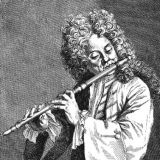Mujitsu and Tairaku's Shakuhachi BBQ
World Shakuhachi Discussion / Go to Live Shakuhachi Chat
You are not logged in.
Tube of delight!
#1 2007-03-15 17:25:12
- zenportugal
- Member
- From: Portugal
- Registered: 2007-02-20
- Posts: 1
Transverse 4 hole pentatonic flute-newcomer
Hello dear srs
My name is carlos and iam from POrtugal...
Iam an intusiast flute plyer and maker...I make my odd bamboo flutes , but they are not very good...
I have a wood shakuhachi that i buy in a germany shop, i thinj it is a mejiro wood flute...
I would like to ask if someone can help me with making a tranverse 4 hole pentatonic flute...What are the percentages to put the fingerholes in one of this flutes...
I want to try to make some bass flutes for my incursions in the woood!!!! ![]()
hope you can help me...
My best wishes
and sorry my bad english...
carlos
Offline
#2 2007-03-15 18:44:45
Re: Transverse 4 hole pentatonic flute-newcomer
zenportugal wrote:
I would like to ask if someone can help me with making a tranverse 4 hole pentatonic flute...What are the percentages to put the fingerholes in one of this flutes...
Welcome, Carlos. What is the significance of 4 hole flutes to you? I don't even know if one would configure a thumb hole on such a flute. Anyways, if you're open to a 5 hole flute (this is a shakuhachi forum, afterall)... check these links for the percentages/measurements:
http://www.navaching.com/shaku/tuning.html
http://www1.ocn.ne.jp/~tuner/esyaku8.html
-Darren.
When it is rainy, I am in the rain. When it is windy, I am in the wind. - Mitsuo Aida
Offline
#3 2007-03-15 19:52:08
- radi0gnome
- Member

- From: Kingston NY
- Registered: 2006-12-29
- Posts: 1030
- Website
Re: Transverse 4 hole pentatonic flute-newcomer
dstone wrote:
zenportugal wrote:
I would like to ask if someone can help me with making a tranverse 4 hole pentatonic flute...What are the percentages to put the fingerholes in one of this flutes...
Welcome, Carlos. What is the significance of 4 hole flutes to you? I don't even know if one would configure a thumb hole on such a flute.
I personally like the thumb hole on pentatonic transverse flutes. On one hand, it plays the same note as playing into the 2nd octave with all holes closed, however it gives you a hole that you can use to slide up to that note.
As far as the hole placement, aside from using the plans on the websites Darren provided links to, you can try placing them in the same place as on a six hole diatonic flute but leaving out the holes for the 2nd and 5th finger. This will work best on flutes with small holes because, by leaving the holes unopened, basically what you're doing is playing cross fingerings for the F and C (on a D flute) and cross fingerings work best on flutes with small holes. You might have to move the hole for the F to get it to play in better tune, and if you want larger holes you'll need to make futher adjustments, but it should get you started in the right direction.
"Now birds record new harmonie, And trees do whistle melodies;
Now everything that nature breeds, Doth clad itself in pleasant weeds."
~ Thomas Watson - England's Helicon ca 1580
Offline